First Time in Three Years: The Saga International Balloon Fiesta

Author’s Note: Hello everyone! It’s been an incredibly busy four months since my last blog post. Just letting you know I am doing A-Okay. Work has been fulfilling, and my students even won the Fukuoka Prefectural English Debate Competition this past October! Anyway, here’s my experience at the 2022 Saga International Balloon Fiesta!
The COVID-19 pandemic is something we’re all sick and tired of by now. As we experienced, many festivities and celebrations were postponed indefinitely until the pandemic was under control. Well, in Japan’s case, until the economy couldn’t take it anymore. Nonetheless, 2022 saw the return of Japan’s biggest festivals, including Hakata Dontaku, Hakata Gion Yamakasa, and in neighboring Saga Prefecture, the International Balloon Fiesta.
For the first time in three years (3年ぶりに)(san-nen buri ni), the International Balloon Fiesta was held in Saga city. This humble yet eclectic festival has become the largest balloon competition in the entire Asian continent. Basically, Saga is Asia’s Albuquerque, but with a lot less teal and desert. The 2022 fiesta was held from November 2 – 6, 2022, attracting thousands of patrons from all over Japan. Heck, there were several foreign tourists there. I could easily identify my fellow Americans because they refused to wear their face masks. I guess some things never change.
About the Saga International Balloon Fiesta
The Saga International Balloon Fiesta was first held in 1978 in… Amagi, Fukuoka Prefecture. The festival started as a balloon competition between a small group of Japanese ballooning enthusiasts. The competition quickly gathered a crowd, and even some foreign balloonists. The festival quickly outgrew it’s site in Amagi, so organizers relocated it to a site along the Kase River in Saga, Prefecture in 1980. The festival kept growing, becoming one of the largest international ballooning competitions in the world. Take that, Albuquerque! In 1989, JR Kyushu built a temporary station near the Kase River called “Balloon Saga,” allowing patrons to quickly access the festivities from anywhere in Japan.
My First Major Festival in Japan
the Saga International Balloon Fiesta was one of my bucket list festivals, along with the Sapporo Snow Festival in Sapporo. I went along with some friends to take part in this experience on Saturday, November 5, 2022.
I took the new “Relay Kamome” limited express from Hakata to Saga, which took about an hour and cost 2,130 yen. While identical to the old Kamome limited express, the AI-generated voice announcements were improved since they were first introduced last March. In addition, this service used an 8-car variant of the 787 series transit, whereas the old service used 7-car versions. It was a fairly smooth and speedy run between the two stations. Upon arriving in Saga, I purchased a local ticket to travel two stops to Balloon Saga, as the Relay Kamome does not stop there.

Saga Station was packed. The platform was lined with employees wearing crimson red vests reading “JR Kyushu Staff,” guiding patrons from the overcrowded platforms to the rolling sardine cans we call trains. If you thought Tokyo trains got crowded, you should check out Nagasaki Main Line trains during the Balloon Fiesta!
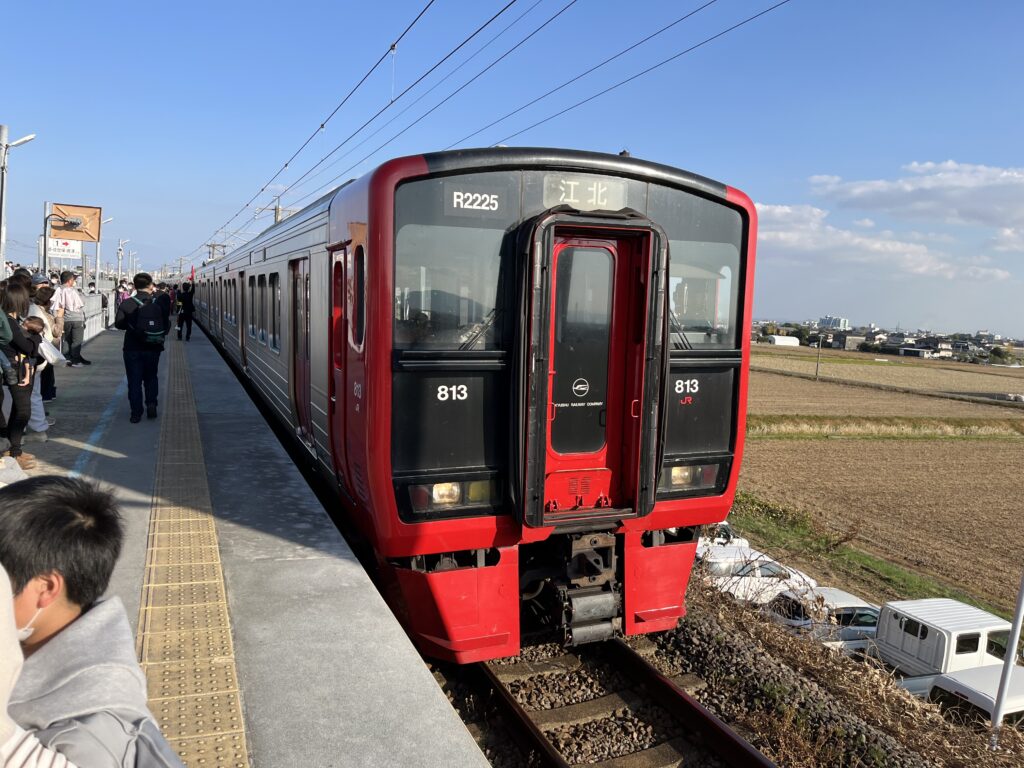

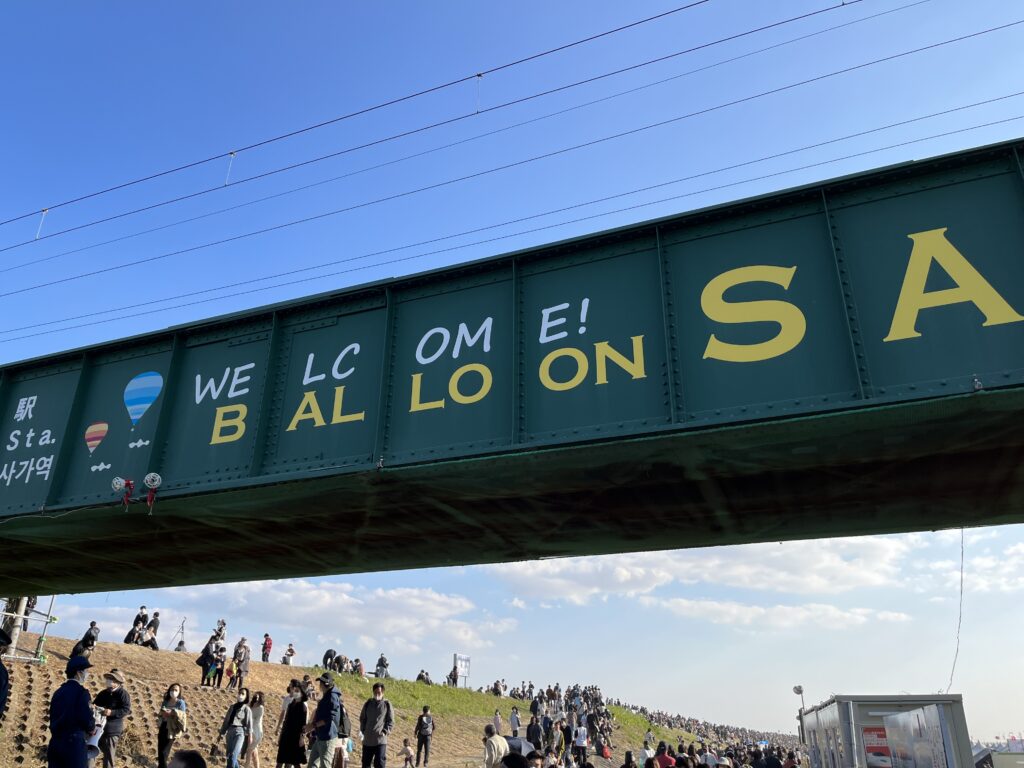
The Saga International Balloon Fiesta Experience
I was greeted with a hectic yet orderly crowd as I disembarked at Balloon Saga station. I marveled at the makeshift engineering of the station and took dozens of pictures, because to me, this “Amshack” of a JR station was one of a kind. Then, I was swept away by the flowing river of people to the exit, where I regrouped with my friends and walked around the riverbed.
There were loads of shops lining the street. While these shop stands are called “yatai” (屋台), they’re no different than what you’d find at a county fair in the US. There were some which sold rainbow-colored fried cheese, as well as hot dogs, shaved ice, and one that sold butter manju. My friends and I snacked our way through the shop-lined riverbank while we waited for the sun to set.
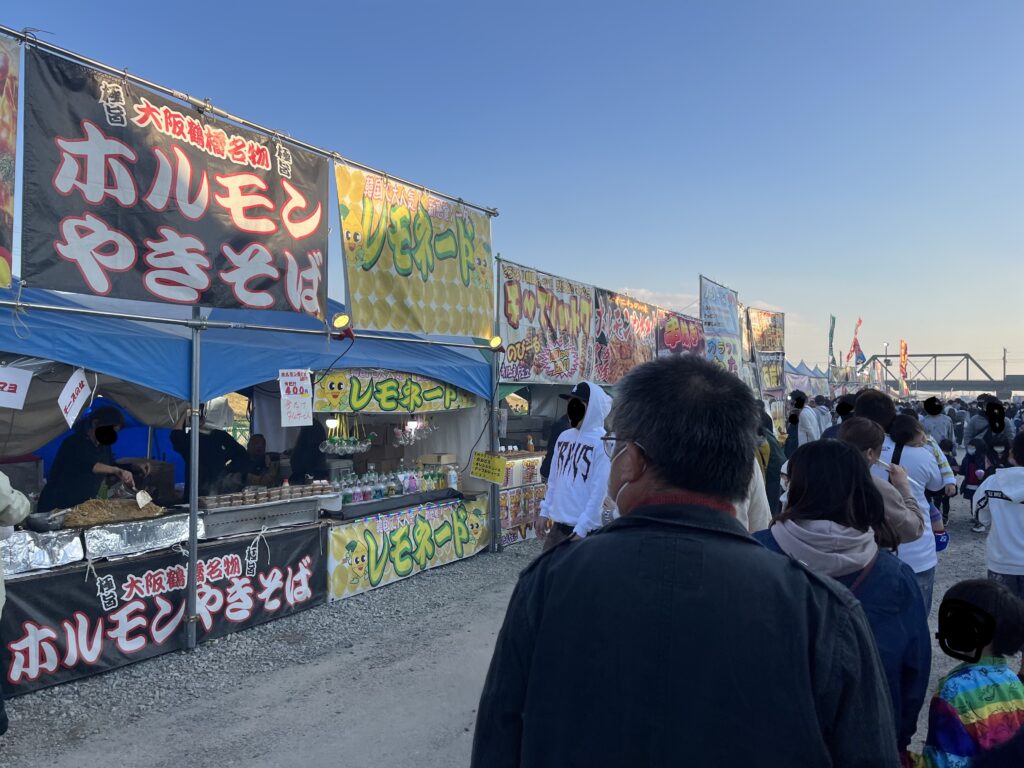

Normally, balloon competitions occur during the day, but due to windy weather, the balloon competition was cancelled. Bummer. Hey, I was here with my friends, and we made the most of our time on this fine, chilly day.
We headed to the balloon staging area, just south of the Nagasaki Main Line, at around 5:30. While there, we seated ourselves along the slope of the riverbank and watched as dozens of tall, propane-fueled flames inflated large hot-air balloons. We had front-row seats in front of two balloons advertising Salonpas. You may be thinking “Why Salonpas?” This is because Hisamitsu Pharmacuteculs, the makers of Salonpas and Robitussin, is headquartered in nearby Tosu. We also saw balloons from Honda, Nippon Express, and other balloons promoting world peace, and one that looked like Tom from Tom and Jerry! There were about three dozen balloons today.
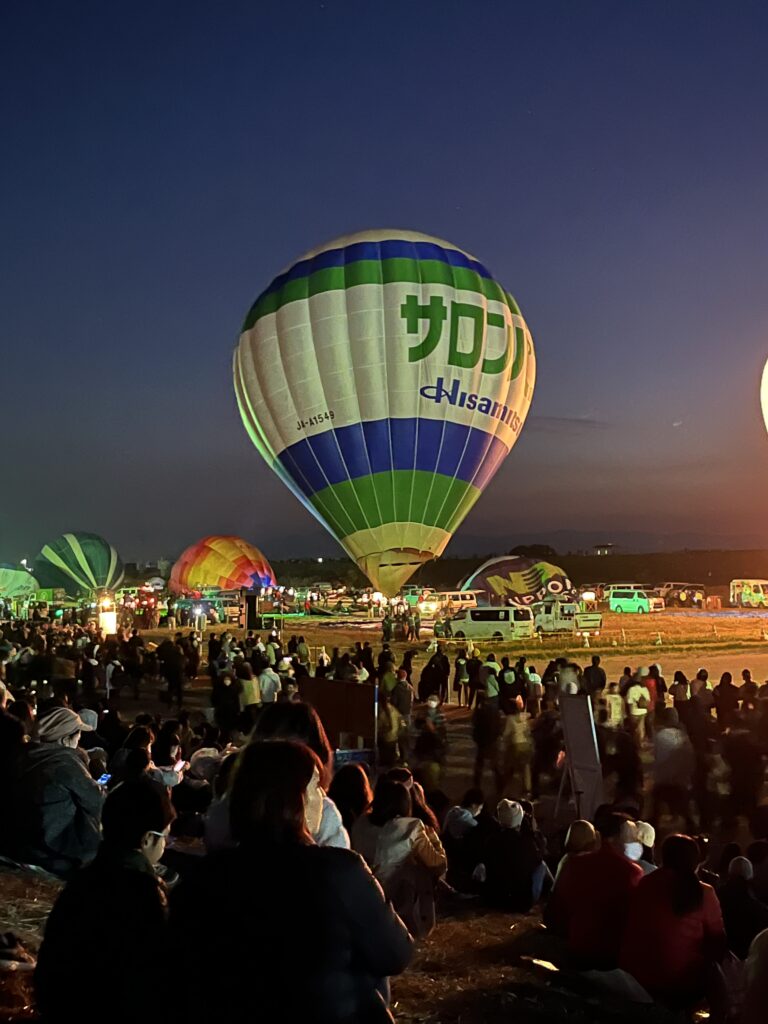
Oversized Lanterns
Once the sun set at around 6:30 PM, the show truly began. While the balloons didn’t fly today, they did put on a wonderful show called “La Montgolfier Nocturne” (Night Mooring). The balloons lit their flames at various times while music played in the background. It created a wonderful spectacle which hypnotized the audience with bright orange glows, the sounds of flames, and dancing balloons. Some balloons floated a few feet off the ground, causing havoc for others! At various times, the launch master instructed all balloons to light their flames simultaneously. Let me tell you, there’s few festivities more awe-inspiring than watching 36+ hot air balloons light their flames simultaneously. If only we could feel the intense heat these flames generated, we were freezing!
I was mesmerized by the alternating glow of each and every balloon as they ignited. The balloons danced around like giant bobble-heads and lit up like jack o lanterns during Halloween. I kept thinking about lanterns at temples and shrines. Maybe to the Japanese mind, this balloon spectacle reminded them of the traditional lanterns of old? I don’t really know, but I wondered.

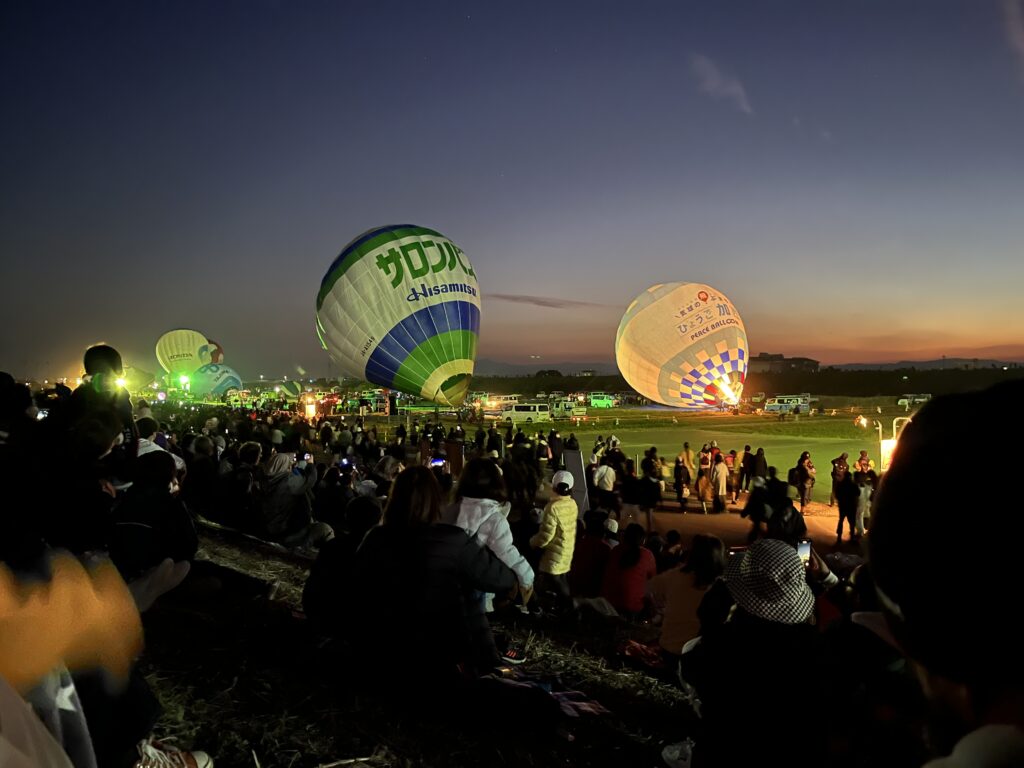
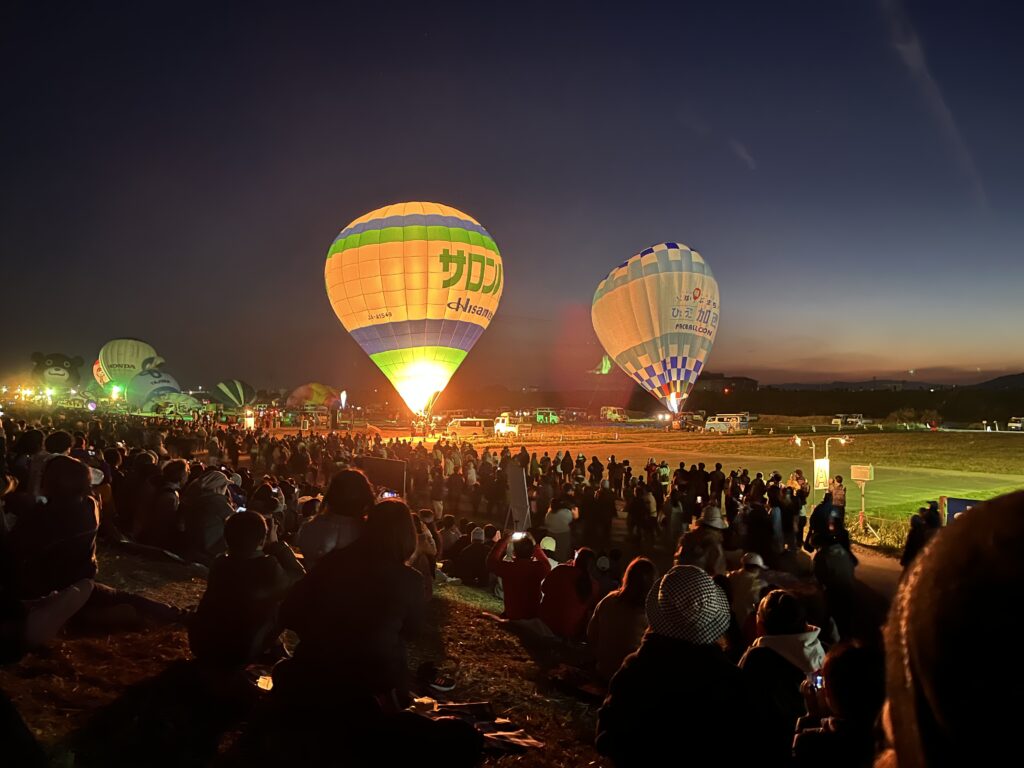
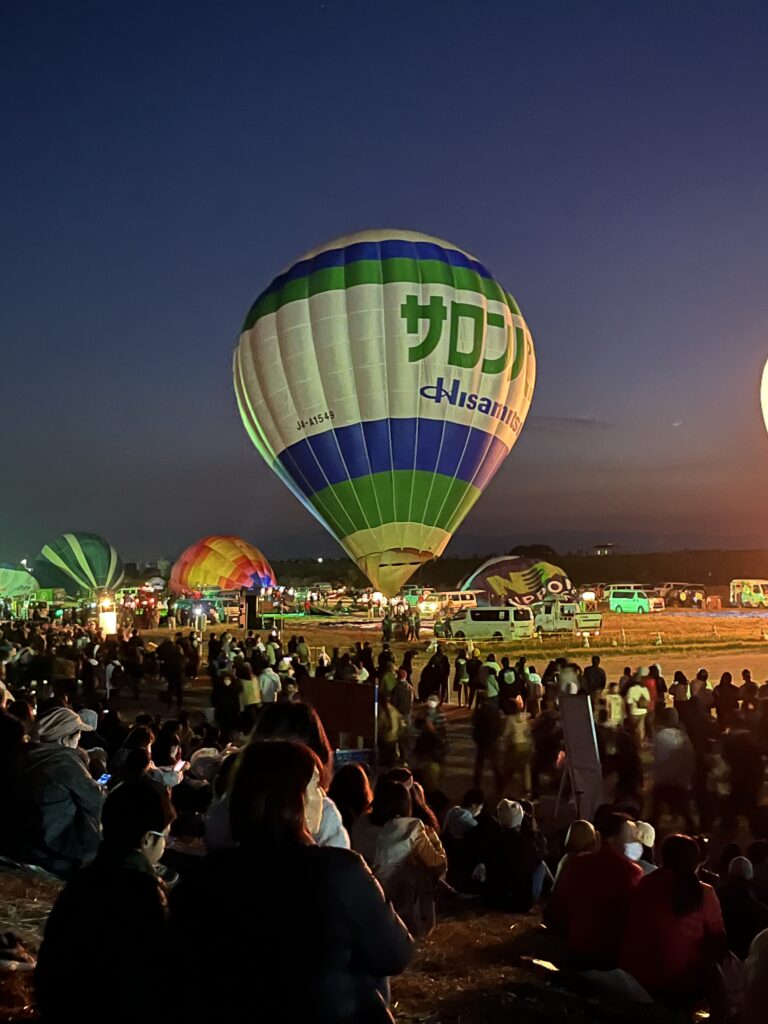
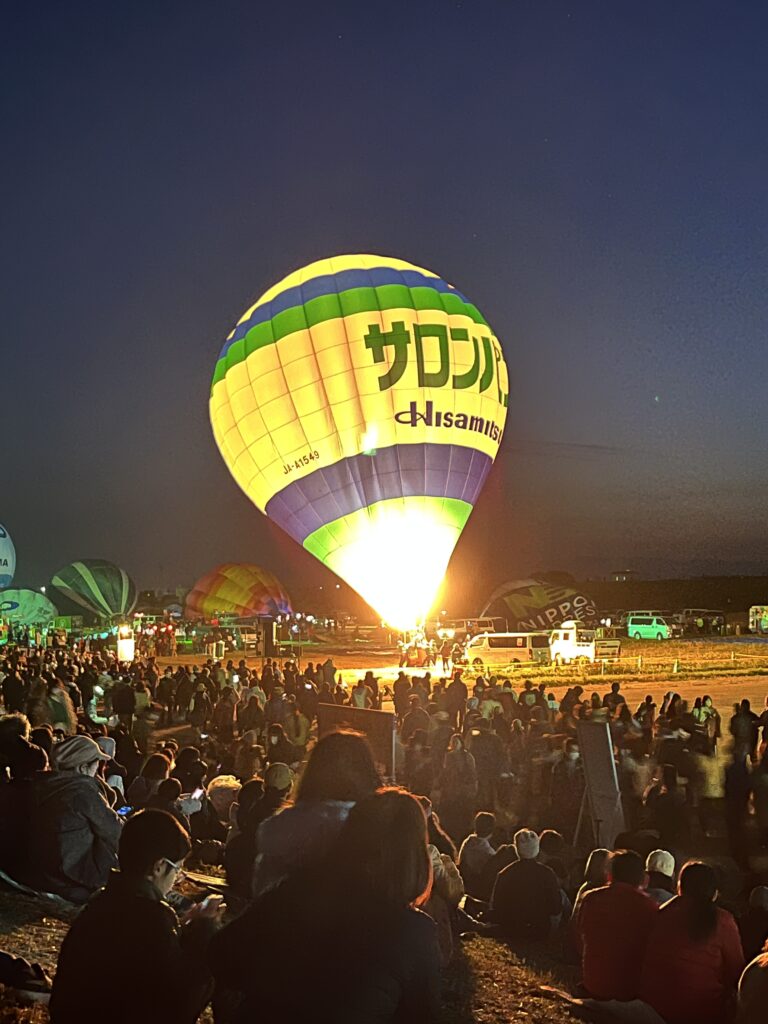
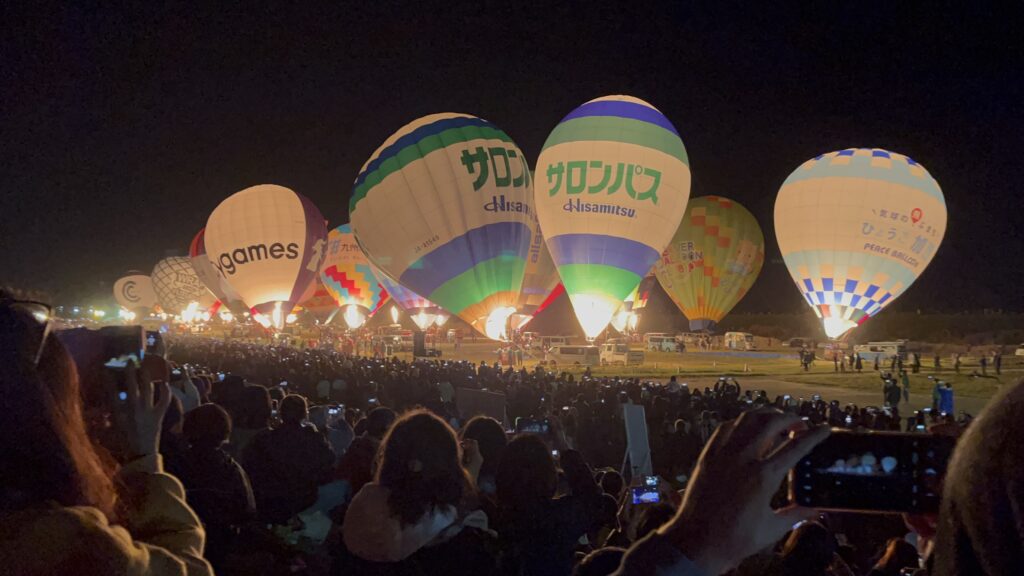
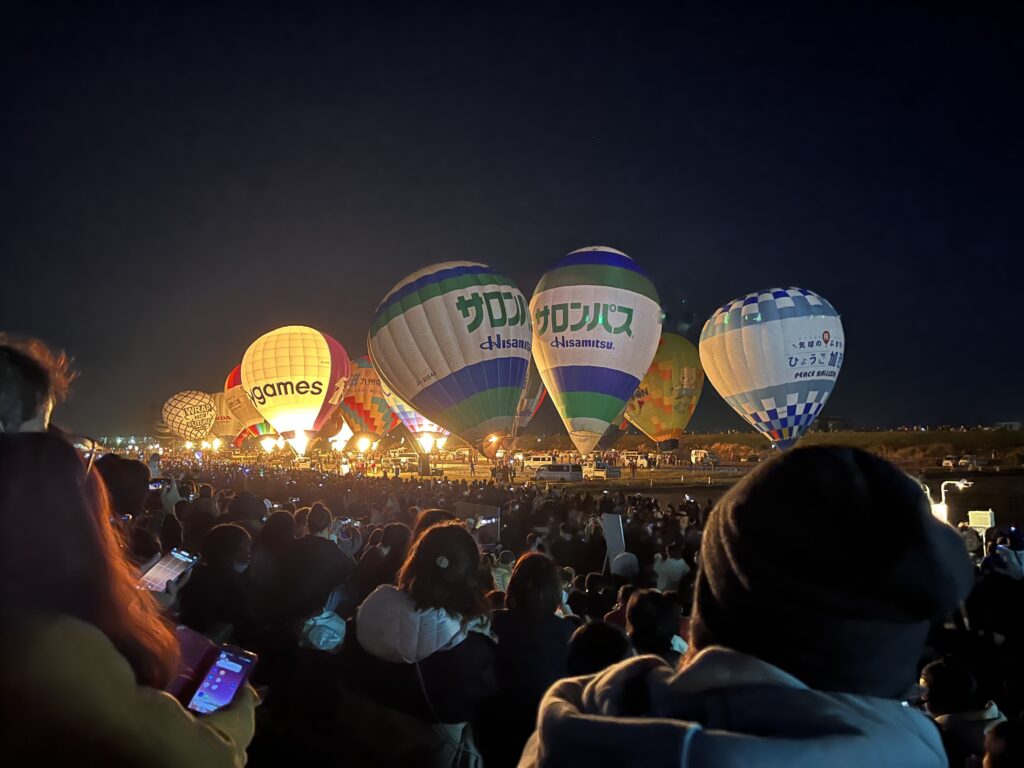
Closing Thoughts
The festival ended at around 7:00 PM, shortly after a short fireworks show distracted the audience from the now deflating balloons. While the balloonists packed their aircraft away, the audience rushed to Balloon Saga station to catch their trains back. The line quickly grew to over a mile (1.6 km) in length. It was during this rush that I realized just how eclectic some Japanese festivals can get. It also symbolized a return to relative normalcy now that Japan has put the COVID-19 pandemic mostly behind them. There were loads of tourists both domestic and international out that night. While I continue to mask up and keep cautious about COVID exposure, I also recognized most no longer care.
For me, the Balloon Fiesta was the first festival post-COVID I got to truly appreciate. While I’m much busier at work these days, I hope I can experience and appreciate more Japanese festivals during this new normal.